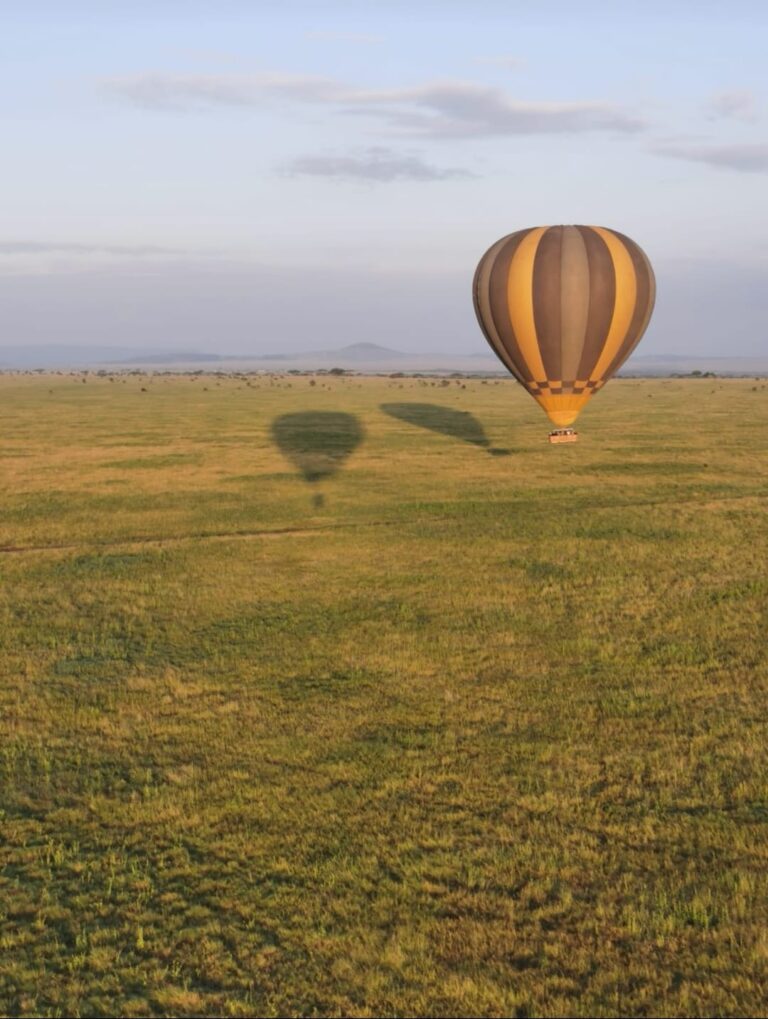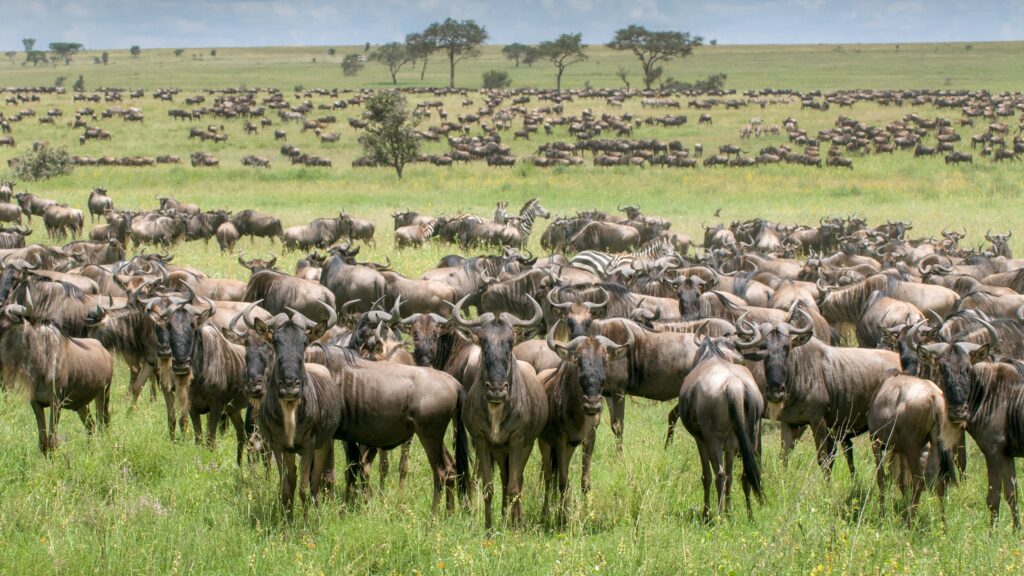Tanzania's Green Season
Tanzania’s Green Season (November–April) holds many secret treasures and is hold by most insiders as the best time to go on safari. Photography conditions are great, there are lots of baby animals around (predator action!), and best of all: you’ll have the wilderness all to yourself at low-season rates. Discover the pros and cons of a Green Season safari in this Blog. ‘Green Season’ is a safari term for a specific period in Africa that falls within the warm rainy months. It is traditionally considered the low season for safari travel and an unfavorable time for game viewing, as animals are harder to spot in the abundance of new leaves and tall grasses. Wildlife also spreads out from waterholes and rivers, making the most of the abundant surface water and taking advantage of the fresh grazing that turns the dry savannah into lush rolling grasslands. This new grazing is what triggers the migrations of large herds of wildebeest and zebra in East Africa. It is not conventionally considered a comfortable time to go on safari either – the summer heat is made sticky with the humidity raised by afternoon showers, and insects are at their most prolific in these perfect breeding conditions.
That being said.. a Green Season safari holds many secret treasures and this low season is considered by most safari lovers the best time to visit Africa. As always, this depends on what you want to see and experience on your trip. So, to help you decide whether a Green Season safari is right for you, we’ve put together this guide on everything you need to know about Tanzania’s Green Season:
When is Green Season? It’s important to note that East Africa has two distinct rainy seasons: The ‘long rains’ (March/April to May) and the ‘short rains’ (October/November to December)
• The long rains, as the name suggests, are far heavier. Some lodges and camps may close over this period to attend to general maintenance and refurbs, and to give their staff a long and well-deserved break. Dirt roads turn to sticky mud, rivers flood their banks, and the almost persistent drizzle never really allows for a sunny gap for game viewing.
• The short rains are usually expected in November and December. They break the dry mid-year winter, which is considered high or peak safari season. Clouds build up during the mornings – which can be very sunny and humid – and break in spectacular, but generally short-lived, showers in the late afternoons.
Pro and con of a Green Season safari:
Pro:
- Lots of baby animals around – excellent for predator action
- Fantastic time for birdwatching
- No crowds – national parks are quiet
- Great photography conditions
- Low accommodation rates
Con:
- Hot and occasionally wet weather
- Some lodges may not be open
- More insects, including mosquitos – higher risk of malaria
- Animals are trickier to spot in Southern Africa due to lush vegetation

Our favourite natural events kick off after the first rains of the Green Season:
- Mega-herds of wildebeest migrate from Kenya’s Masai Mara into Tanzania’s Serengeti.
- The birthing season begins, filling the plains with adorable fawns, foals, calves and cubs.
- Migrant birds arrive in their thousands to take up colourful residence on lakes and lagoons
- For photographers, the Green Season boasts the best light of the year – seared skies are replaced with luscious golden light and moody grey palettes of towering clouds. The rain-washed air is crisp and clear, making colours pop, and the cloud-stacked sunsets are breathtaking. There is plenty of wildlife action to capture, from the babies taking their first steps to the dramatic life-and-death scenes of predator and prey interactions.
Best of all, it’s the time of year when you might actually have the wilderness all to yourself. Because it’s safari’s low season, there are few visitors – even in prime destinations. In Tanzania, you can have the best game viewing of the year completely crowd-free. Fewer guests mean a more intimate and personalized experience every step of the way, essentially paying less and gaining great value! Unfortunately, some of top lodges are inaccessible during the rainy Green Season because of river crossings and airstrips becoming waterlogged. Other lodges choose this quiet time to close for their annual maintenance.
Africa is a wild place where insects are a natural and integral part of the ecosystem. After the rains, insects traditionally breed in the damp, warm conditions. This means there are simply more bugs around, including mosquitos. We always recommend taking precautions against insect bites and consulting your local travel clinic about malaria prophylaxis at any time of the year. The Green Season is no different.
A seemingly obvious disadvantage is the Green Season’s rainy aspect. But, while it ups the humidity and interrupts most afternoons, the rain is rarely unpleasant. The first fact to know is that inland from the coast – where the legendary game-viewing destinations are found – rain tends to fall in regular afternoon thunderstorms. They build up dramatically and depart swiftly, leaving behind cool, crisp air, damping down the dust and making your afternoon siesta more pleasant. The most popular time to be on safari is during the dry months, which start with winter’s chilly mornings and evenings before progressing into the baking heat and dust of the late dry season. During the Green Season, temperatures tend to be more moderate and softened by the humidity, which can make conditions sticky but generally pleasant.

Where to Go on a Green Season Safari:
If you’re a fairly intrepid traveler the Green Season’s advantages are worth considering, specifically in the hidden gem destinations. It’s in these special places where unique wildlife spectacles occur, offering you an incredible safari experience in the quieter months.
In East Africa, one of the greatest advantages of the Green Season is that you won’t experience traffic jams of safari vehicles around animal sightings. You can also experience a period in the Wildebeest Migration that is dramatic, endearing and awe-inspiring!
The short rains in November trigger the Wildebeest Migration, drawing the herds from the Masai Mara into the northern Serengeti to feast on the fresh grasses and birth their calves. From December, the plains fill up from horizon to horizon with wildebeest and their calves, zebra and their foals, and all the predators attracted to the easy prey.
This incredible spectacle awaits you in crowd-free game viewing conditions at low season rates – a winning combination. Besides witnessing one of the most beautiful and haunting periods of the Migration, you can also enjoy legendary game viewing in classic landscapes that offer another advantage specific to a Green Season safari: phenomenal photography conditions.
Check out our Green Season Safari package by clicking here.
Ready to Start Planning Your Green Season Safari? Get in touch with one of our Safari Experts from Afrimine Tours to help tailor-make a Green Season safari to suit your travel wishes
